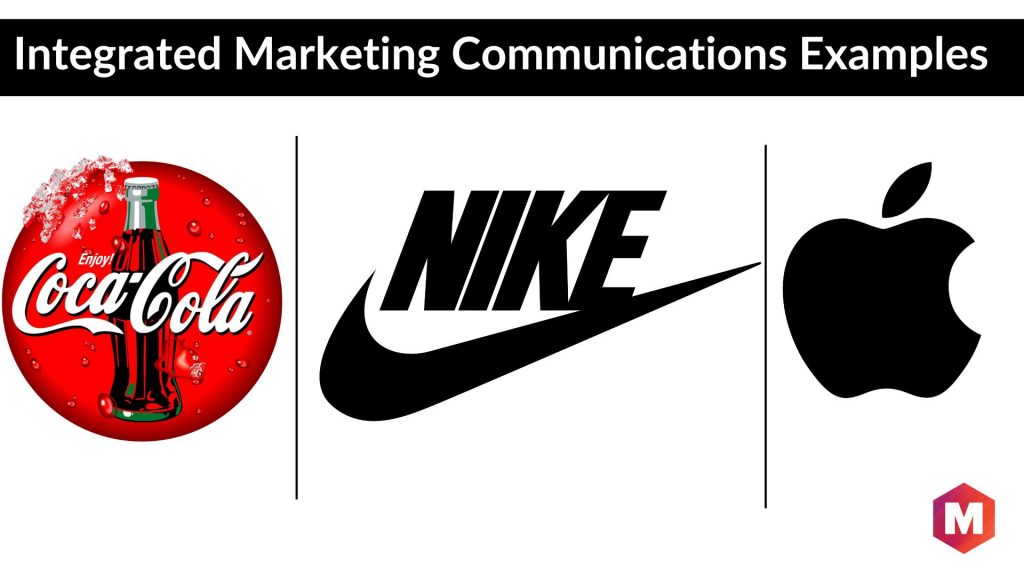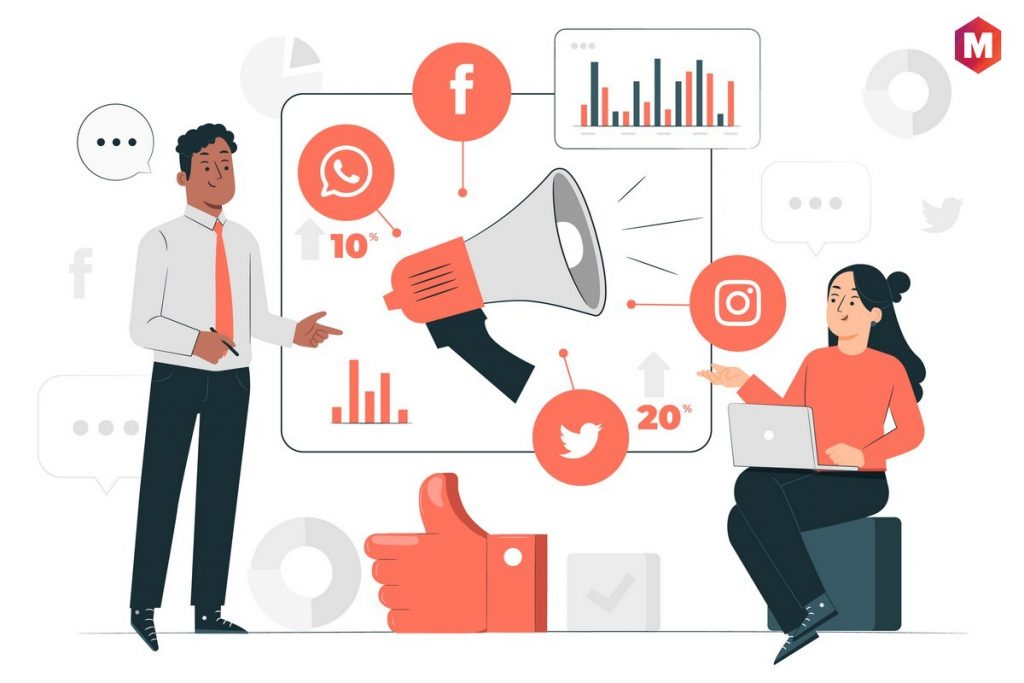Integrated Marketing Communications (IMC) is an approach to marketing communications (MarCom) that integrates all forms of communications across different marketing channels to create consistent messaging across all brand communication channels and ensure a unified brand experience for customers. It is also known as Integrated Communications, Integrated Marketing, or Integrated Campaigns.
IMC should be rooted in strategic business planning so it aligns with and supports the business strategy. The goal of IMC is to deliver a consistent message across all channels and touchpoints to create a cohesive brand experience for the customer. By aligning all marketing communications, businesses can more effectively reach their target audience, build brand awareness, and increase sales and leads.
Table of Contents
What is Integrated Marketing Communications (IMC)?
Integrated marketing communications (IMC) is a process of unifying all the communication channels, and messages to deliver a consistent marketing message across multiple channels and create a consistent brand identity.
An example of Integrated Marketing Communication IMC could be a company that produces and sells furniture. The company can use TV, radio, social media posts, website content, email campaigns, and direct mail to promote its product in one integrated marketing strategy. All of these channels should have consistent messaging about the product while still offering unique value to each specific channel.
The goal of this type of marketing is to create integrated marketing campaigns that target customers across multiple channels and platforms. This helps ensure that the customer experience is consistent and enables businesses to measure their success more accurately.
IMC is often used as a strategic marketing initiative that coordinates all of an organization’s marketing activities, including advertising, sales promotions, public relations, direct marketing, and social media, to create a cohesive and consistent brand identity.
Meaning of an Integrated Marketing Communication
With an integrated marketing communication strategy, businesses can effectively communicate their brand message to customers and prospects across multiple channels, touchpoints, and interactions. This ensures that customers receive a consistent marketing message regardless of how or where they interact with the company.
Integrated marketing strategy is an important part of any marketing strategy as it helps businesses to better connect with their target audience, build strong relationships, and ultimately, drive sales.
When done correctly, integrated marketing communications programs can help businesses to
- Build brand awareness
- Increase customer loyalty
- Boost sales and ROI
- Drive online traffic
- Improve customer engagement
- Enhance customer experience, etc
IMC is a powerful marketing tool that can be used to achieve a variety of business objectives. However, it’s important to note that IMC is not a one-size-fits-all solution. The success of an IMC strategy depends on several factors, including the company’s goals, target audience, budget, and more.
Integrated Marketing Communication Vs General Communication
Integrated marketing communication and general communication are two distinct methods of communicating with customers. General communication focuses on a single channel or medium, such as email or print advertising. However, integrated marketing communication combines different channels and messages to create a cohesive messaging strategy for businesses.
Unlike general communications, integrated marketing communications is an effective way for businesses to engage their target audience in multiple ways, resulting in higher levels of customer engagement and sales. Additionally, integrated marketing communications help businesses to reach their goals faster as it targets customers across different channels.
At the same time, general communication can still be used to achieve certain objectives. For example, if a company wants to promote a new product launch or event, it may opt for general communication to reach a wider audience, as it can provide more visibility and reach.
Why is Integrated Marketing Communications Important
Some of the reasons behind the importance of IMC are that it
1. Helps to build a cohesive brand identity and message
With so many channels and touchpoints, it can be difficult to control the message your brand is putting out there. Integrated marketing communications ensure that all messages are consistent and align with your brand identity. This helps to create a cohesive and consistent brand experience for customers, making them more likely to remember your brand and do business with you.
2. Can save time and money
Integrating your marketing communications can save you time and money by preventing duplication of effort and streamlining processes. When done correctly, IMC can also be more effective and efficient than traditional marketing techniques, resulting in a higher return on investment (ROI).
3. Allows you to track and measure results
IMC provides a way to track and measure results across all channels. This helps you to see which channels are performing well and adjust your strategy accordingly. It also allows you to identify opportunities for improvement so you can fine-tune your campaigns and get the most bang for your buck.
Steps to Create an Integrated Marketing Communication Campaign
1. Decide a concrete, well-designed, and attainable campaign goal
Without a goal, you won’t be able to measure the success of your campaign. Make sure your goals are specific, achievable, and relevant to your business.
2. Figure out which marketing channels will work best for you and set goals for each one
Not all channels will work for every business. Consider which ones make the most sense for you and set goals for each one. For example, if you’re using email marketing, your goal might be to increase open rates by 10%.
3. Create buyer personas for each of your marketing channels
A buyer persona is a fictional character that represents your ideal customer. Creating them will help you better understand your target audience and what they want from your campaign.
4. Decide your channel managers
Channel managers are the people responsible for overseeing each marketing channel. This could be one person or a team, depending on the size of your campaign and company.
5. Create marketing assets and messaging that can be easily adapted
Creating flexible assets and messaging will save you time and money in the long run. That way, you can reuse them across multiple channels without having to start from scratch each time.
6. Establish your plan for collecting leads
A lead is someone who has shown interest in your product or service. You need to have a plan for how you’re going to collect leads so you can follow up with them later.
7. Launch, measure, and iterate your campaign
Once you have all the pieces in place, it’s time to launch your campaign. After it goes live, measure the results and make adjustments as needed. Then rinse and repeat! Integrated marketing communications is an ongoing process, so be prepared to iterate as needed.
Tools of Channels of IMC
1. Advertising
Advertising is a paid form of marketing that promotes your product or service to a wide audience. It can be done through various channels, such as television, radio, print, and online.
2. Sales promotion
Sales promotion is a short-term incentive that encourages people to buy your product or service. It can take many forms, such as coupons, discounts, or contests.
3. Digital marketing
Digital marketing is the use of digital channels to promote your product or service. This includes things like email marketing, social media marketing, and search engine optimization (SEO).
4. Personal selling
Personal selling is when you sell your product or service to someone in person. This can be done through face-to-face interactions, over the phone, or online.
5. Social media marketing
Social media marketing is the use of social media channels to promote your product or service. This can be done through paid ads, organic posts, or engaging content.
6. Public relations
Public relations is a strategic way to build relationships with customers, reporters, and other influencers. It can be done through media relations, events, or thought-leadership content.
7. Mobile marketing
Mobile marketing is the use of mobile devices to promote your product or service. This can be done through SMS messaging, push notifications, or mobile ads.
8. Direct marketing
Direct marketing is a type of marketing that promotes your product or service directly to customers. This can be done through direct mail, telemarketing, or email marketing.
9. Events and experiences
Events and experiences are a great way to connect with customers in a fun and memorable way. This can be done through trade shows, pop-up shops, or brand activations.
Example of Creating an IMC Plan
Let’s have a look at different steps you will need to following while creating an integrated marketing communications plan –
Goal: To increase brand awareness of our new product line among young adults aged 18-24.
Tactics:
- Social media campaign targeting young adults aged 18-24
- Sponsorship of a popular podcast among young adults
- An influencer marketing campaign featuring popular influencers in the 18-24 age demographic
- Creation of informative blog content about the new product line
- Advertising on popular websites frequented by young adults
Metrics:
- Increase in website traffic from 18-24-year-olds
- Increase in social media engagement from 18-24-year-olds
- Increase in sales of the new product line among 18-24-year-olds
Budget:
- $5,000 for social media ads
- $10,000 for an influencer marketing campaign
- $2,500 for blog content creation
- $3,000 for website advertising
Timeline:
- Social media campaign: March-May
- Influencer marketing campaign: April-June
- Blog content creation: February-April
- Website advertising: March-May
Examples of Brands using Integrated Marketing Communications (IMC)
1. Coca-Cola
Coca-Cola is a great example of a company that uses Integrated Marketing Communications effectively. They use a variety of channels to reach their target audience, including television, radio, print, and digital. Their content is also highly compelling, and visually appealing, and includes call-to-actions that encourage people to buy their products.
2. Nike
Nike is another company that does a great job with Integrated Marketing Communications. They use a mix of owned, earned, and paid media to reach their target audience. Their content is often inspiring and motivating, which drives people to purchase their products.
3. Apple
Apple is a master at Integrated Marketing Communications. They use a variety of channels to reach their target audience, including TV commercials, print ads, social media posts, and email marketing campaigns. Their content is always high-quality and designed to get people to take action.
Integrated Marketing Strategies and Best Practices
Here are a few integrated marketing strategies and best practices to keep in mind as you develop your own plan:
1. Doing thorough research: Once you know what you want to achieve, do your research to determine which channels will be most effective in helping you reach your target audience. Consider things like where they spend their time online, what type of content they consume, and what kind of messaging they respond to.
2. Create compelling content: No matter which channels you use, your content needs to be compelling to achieve your desired results. This means creating content that is interesting, informative, and/or entertaining.
3. Make it visually appealing: People are more likely to engage with visually appealing content. This could include using images, infographics, videos, or other types of media.
4. Use call-to-actions: Your content should always include a call-to-action (CTA) that tells people what you want them to do next. This could be something like visiting your website, signing up for your email list, or making a purchase.
5. Considering smooth channel transition: As you develop your content, keep in mind how it will work across different channels. For example, if you’re creating a video for social media, make sure it’s short and to the point since people are likely watching it on their mobile devices.
Benefits of Integrated Marketing Communications
There are many benefits of Integrated Marketing Communications, including
1. Building brand awareness and equity: Integrated marketing communications can help you build awareness for your brand and create a positive association in the minds of consumers.
2. Generating leads and sales: By reaching your target audience through multiple channels, you’re more likely to generate leads and sales.
3. Improving customer relationships: Integrated marketing communications can help you build stronger relationships with your customers by creating a consistent experience across all touchpoints.
4. Reducing marketing costs: Integrated marketing communications can be more cost-effective than traditional marketing methods because you’re able to reach your target audience through multiple channels at once.
5. Increasing ROI: Integrated marketing communications have the potential to increase your return on investment (ROI) by generating more leads and sales while also reducing marketing costs.
Conclusion!
If you want to create a successful integrated marketing communications strategy, you need to start by creating a strong and consistent marketing message.
From there, you can develop various marketing initiatives that work together to support that message and help you achieve your desired results. By taking the time to plan and execute an integrated approach, you can ensure that your marketing efforts are working together towards a common goal.
If you need help getting started, there are plenty of resources available to assist you in developing an integrated marketing communications strategy that works for your business. With a little planning and effort, you can create a powerful marketing campaign that gets results.
What do you think is the most important aspect of an effective IMC strategy? Let us know in the comments below.
Integrated marketing communications FAQs
Q: What is the definition of integrated marketing communications?
A: Integrated marketing communications (IMC) is a strategic approach to creating and delivering consistent messages across all of your marketing channels. The goal of IMC is to create a unified message that resonates with consumers and drives them toward making a purchase or taking some other desired action.
Q: How do integrated marketing communications benefit businesses?
A: Integrated marketing communications can help businesses save money, increase their customer base, and build brand recognition. Additionally, with a unified message across all channels, businesses have the potential to see increased ROI from their marketing efforts.
Q: What are the components of an effective IMC strategy?
A: An effective IMC strategy includes planning, message development, media selection, implementation, and evaluation. Additionally, it’s important to have a clear goal in mind for each campaign and to make sure that all messages are consistent across all channels.
Q: What are some examples of integrated marketing communication tactics?
A: Examples of IMC tactics include using social media, email marketing, print advertising, television commercials, radio spots, and more. Additionally, businesses may use various tactics to reach different audiences such as influencers or sponsored content.
Liked this post? Check out the complete series on Marketing



